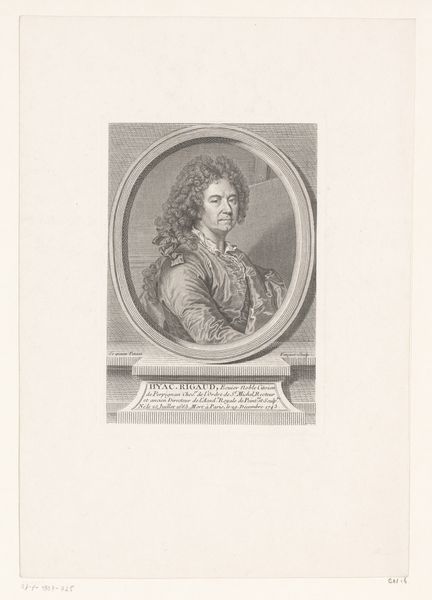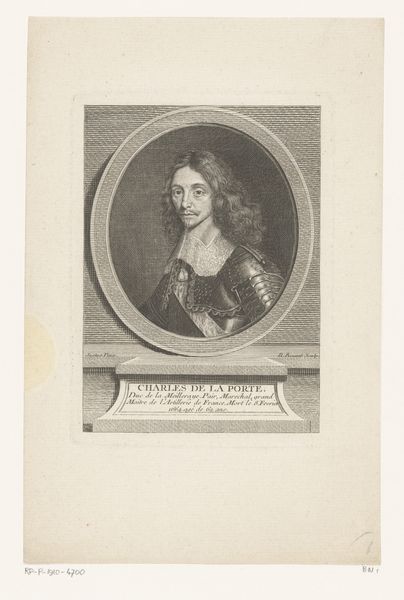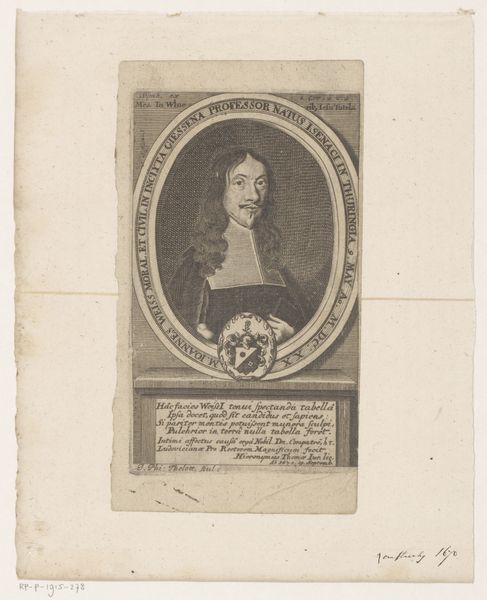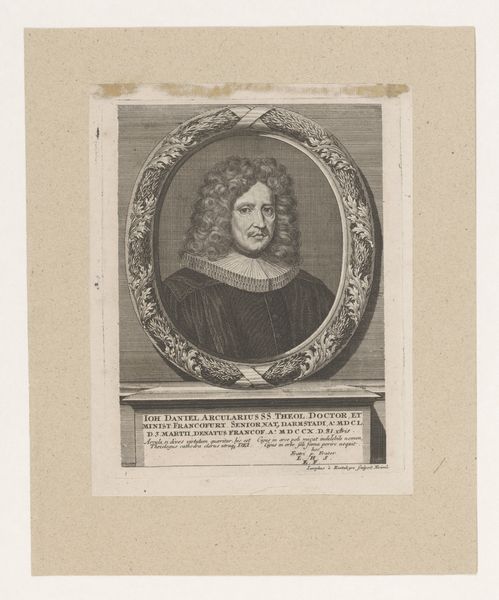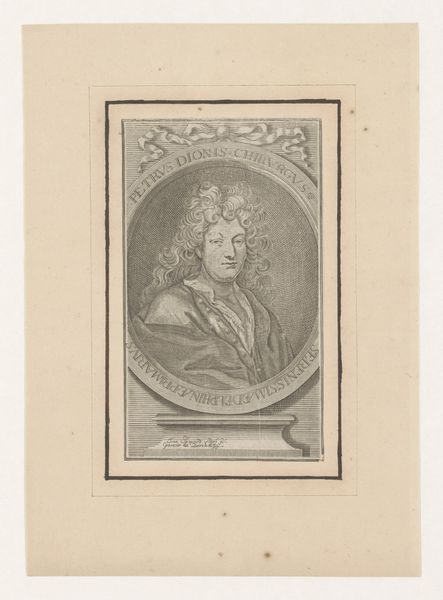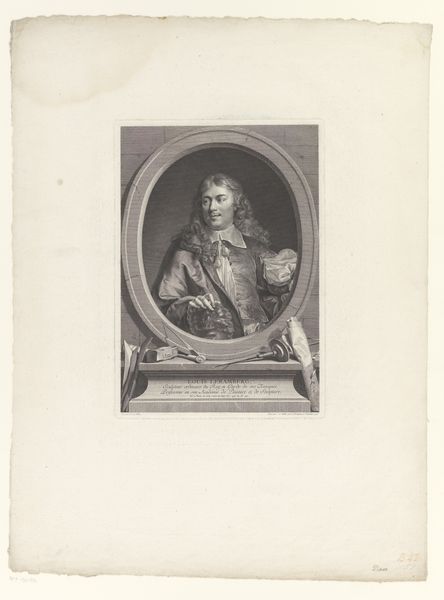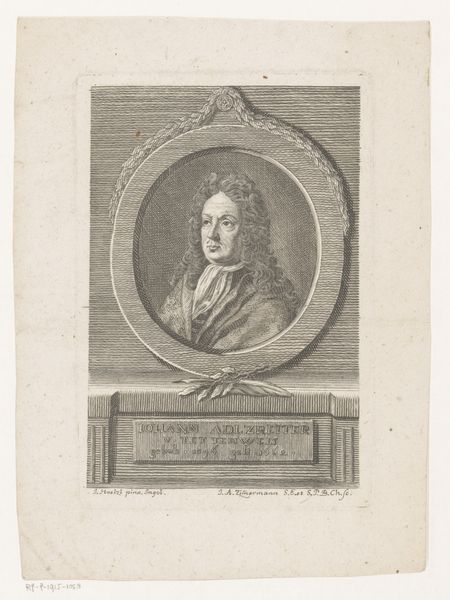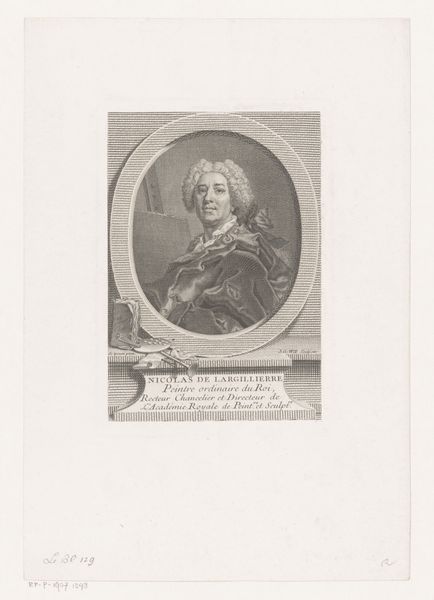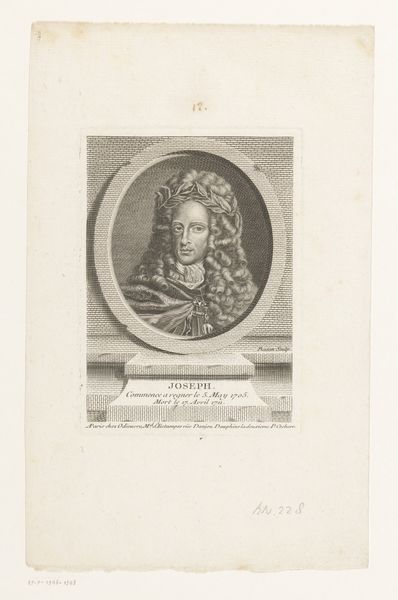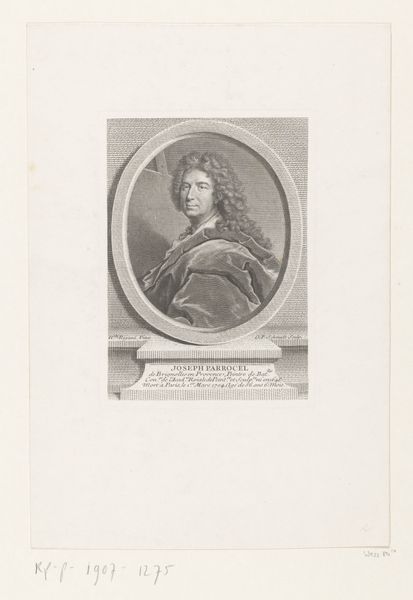
print, metal, paper, engraving
#
portrait
#
baroque
# print
#
metal
#
paper
#
history-painting
#
engraving
Dimensions: height 192 mm, width 152 mm
Copyright: Rijks Museum: Open Domain
Editor: Here we have Elias Nessenthaler's "Portret van Friedrich Hoffmann," made sometime between 1674 and 1714. It's a print, an engraving on metal and paper, quite detailed. There’s a formality and maybe even a bit of detachment in the subject's gaze. How do you interpret this portrait, considering its historical context? Curator: This portrait exists not merely as an image of an individual but as a product of—and a contributor to—the social and intellectual currents of its time. As a historian, I am drawn to consider who Friedrich Hoffmann was within the landscape of 17th and 18th century society. What role did printmaking play in constructing his public persona, and who was the intended audience for this image? Editor: So, beyond simply capturing likeness, it also served a social function? Curator: Absolutely. Portrait prints like this were often commissioned by the sitter themselves, or their families, to project a certain image. Think about how this image might have circulated among scientific or intellectual circles, given that the inscription mentions Hoffmann's medical affiliations. Is it not fair to speculate how prints of prominent individuals could enhance their standing? Editor: That makes me see it differently. It's less a window into someone's soul and more of a carefully constructed brand. Curator: Precisely. The way the Baroque style contributes to the grandeur – the elaborate wig, the draped fabric, the ornate frame – it all speaks to Hoffmann's status. These elements weren't accidental; they were tools for projecting power and influence. The interesting thing to note is the cultural importance and power given to those depicted within historical paintings and the cultural implications around what symbols where used to create authority in that space. Editor: That's fascinating. I hadn't thought about how deliberately constructed these images could be. Thanks for pointing out those connections between art and its broader social function. Curator: It’s about understanding that art rarely exists in a vacuum; it’s a reflection of the world that produces it and often actively shapes that world.
Comments
No comments
Be the first to comment and join the conversation on the ultimate creative platform.


